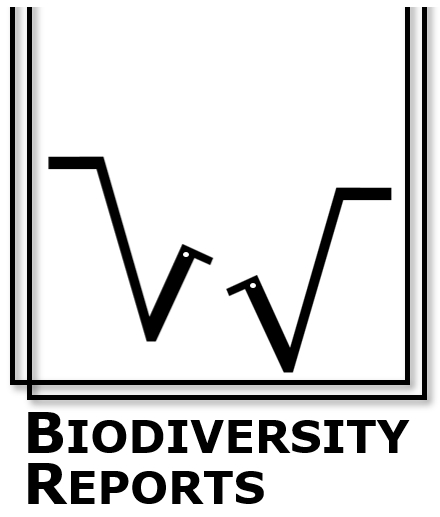On February 26, 2025, the European Commission published a set of proposed amendments to the Corporate Sustainability Reporting Directive (CSRD), as part of an omnibus legislative package intended to streamline sustainability requirements. These reforms significantly reduce the administrative burden on businesses while maintaining the EU’s environmental and social objectives under the European Green Deal (Commission Staff Working Document, SWD(2025) 80 final, 26 Feb 2025).
Although many of these revisions address overarching topics like greenhouse gas emissions and supply-chain due diligence, biodiversity remains a core pillar. This article provides a detailed overview of the key changes, analyzes their economic and policy implications, and explores how biodiversity reporting may evolve across different industries.
1. Setting the Stage: Why Simplify the CSRD?
Over the past several years, the EU has built an ambitious regulatory framework around corporate sustainability, encompassing the CSRD, the Corporate Sustainability Due Diligence Directive (CSDDD), and the EU Taxonomy. However, stakeholders—especially mid-sized companies—have voiced concerns about overlapping obligations and complex reporting requirements (SWD(2025) 80 final, p. 15–17).
- Complex Regulatory Environment: Rapid sequential legislation on sustainability disclosures has resulted in companies juggling multiple, and sometimes duplicative, compliance tasks.
- High Compliance Costs: Many businesses, particularly those on the smaller end of “large undertakings” have reported disproportionately high legal, administrative, and auditing costs.
- Underscoring Competitiveness: In light of Europe’s objective to remain competitive globally, the Commission aims to balance robust sustainability reporting with simplified, proportionate rules.
2. Key Legislative Amendments
2.1 Reduction in Scope
Under the original CSRD rules, any “large undertaking” as defined by the Accounting Directive (i.e., exceeding two of three thresholds: 250 employees, EUR 40 million turnover, or a EUR 20 million balance sheet) and listed SMEs faced significant reporting obligations.
Now, the Commission proposes raising the threshold to 1,000 employees, effectively removing about 80% of previously in-scope companies (SWD(2025) 80 final, p. 21–22). This move:
- Aligns more closely with the CSDDD, which applies to very large companies (1,000 employees / EUR 450 million turnover threshold).
- Aims to reduce estimated cost burdens by billions of euros EU-wide—freeing smaller companies to focus on core activities without diluting transparency for the largest players.
2.2 Streamlined Reporting Requirements
The European Sustainability Reporting Standards (ESRS), which detail how companies must disclose environmental and social data, remain central to the CSRD. However, the Commission proposes revisiting certain disclosure requirements to:
- Eliminate Redundancies: Some indicators, deemed too granular or rarely material, may be consolidated or removed.
- Enhance Interoperability: The ESRS should more closely align with global frameworks (e.g., ISSB, GRI) to facilitate multi-jurisdictional reporting.
- Freeze Additional Sector-Specific Standards: Work on new sector-specific ESRS could be postponed, granting companies time to implement the revised general standards before additional complexity emerges.
2.3 Assurance & Audit Adjustments
While the CSRD originally introduced a limited assurance requirement—with a pathway toward reasonable assurance—the new proposal clarifies that limited assurance will remain for the foreseeable future (SWD(2025) 80 final, p. 20–21). This aims to prevent an overly rapid shift to a more stringent auditing standard, which, according to industry feedback, would have significantly raised costs and created market bottlenecks (e.g., due to auditor skill shortages).
3. Economic Rationale and Projected Impact
3.1 Investment and Cost Savings
According to Commission estimates, additional sustainability reporting (across climate, biodiversity, and other ESG pillars) has historically demanded higher administrative spending from European companies—particularly those with fewer than 1,000 employees. By revising the scope and simplifying ESRS requirements, the Commission’s analysis anticipates:
- Reduced Administrative Expenditure: The Commission projects savings in the billions of euros (SWD(2025) 80 final, Section 3.1.3).
- Stronger Market Efficiency: Clearer, consistent reporting is expected to benefit investors, lenders, and rating agencies by making sustainability data more comparable and less cluttered.
- Balanced Competitiveness: Easing obligations for smaller entities aims to level the playing field, particularly against non-EU companies not subject to the same disclosures.
3.2 Macroeconomic Lens
The Commission Staff Working Document reiterates that environmental degradation, including nature loss, could erode up to 20% of global GDP by 2050 if left unaddressed (SWD(2025) 80 final, p. 2–3). The World Economic Forum (WEF) estimates that over 50% of global GDP—around USD 44 trillion—is at risk from biodiversity decline. This dual recognition of risk and opportunity underpins the updated CSRD framework, which encourages transparent and effective sustainability strategies, including nature protection and restoration.
4. Spotlight on Biodiversity: Why It Still Matters
Despite the overarching simplifications, biodiversity features prominently in the EU’s sustainability objectives. Under the revised rules:
- Companies Above 1,000 Employees will continue disclosing material biodiversity-related risks and impacts.
- Link to the EU Taxonomy: The Taxonomy’s technical screening criteria for biodiversity and ecosystems remain relevant, especially for sectors like forestry, agriculture, construction, and resource extraction.
4.1 Sector-by-Sector Glimpse
Agriculture & Food
- Key Pressure: Land-use change, pesticide use, and water consumption. Reporting Emphasis: Disclosures on habitat protection, sustainable farming practices, and stakeholder engagement in value chains.
Forestry & Wood Products
- Key Pressure: Deforestation and habitat loss in sourcing regions. Reporting Emphasis: Sustainable sourcing, reforestation commitments, and long-term climate impacts.
Construction & Infrastructure
- Key Pressure: Land-use change, soil sealing, and resource extraction impacts. Reporting Emphasis: Biodiversity offset measures, minimization of ecosystem fragmentation, and improved design for green infrastructure.
Mining & Extractives
- Key Pressure: Habitat destruction, water contamination, and tailings management. Reporting Emphasis: Impact assessments, restoration measures, and community engagement processes.
Finance & Insurance
- Key Pressure: Indirect through investment and underwriting portfolios. Reporting Emphasis: Materiality of biodiversity risks in lending and insurance underwriting, alignment with the Taskforce on Nature-related Financial Disclosures (TNFD) approach.
By fine-tuning and prioritizing these disclosures within a broader, simplified framework, the EU aims to maintain biodiversity protection while reducing the burden of excessive or overlapping indicators.
5. What’s Next?
- Legislative Timeline: The Commission’s proposed amendments must be discussed and adopted by the European Parliament and the Council. Implementation timelines may shift, especially for sector-specific standards.
- Guidance & Technical Support: Recognizing the learning curve, the Commission is increasing practical guidance on value-chain reporting, materiality assessments, and assurance. Member States are also launching support initiatives to help companies transition to the new regime (SWD(2025) 80 final, p. 7–8).
- Potential for Further Revision: Stakeholders are encouraged to provide feedback. The Commission and EFRAG may adjust standards or timelines further based on real-world application and market input.
Conclusion
The EU’s recent CSRD amendments represent a significant recalibration of the bloc’s ambitious sustainability reporting framework. While the directive’s scope and certain reporting requirements will be scaled back—potentially saving billions of euros in compliance costs—the emphasis on biodiversity, alongside climate and human-rights due diligence, remains firmly in place for larger corporations.
For industries with notable ecosystem footprints—like agriculture, forestry, infrastructure, and extractives—nature-related metrics and restoration obligations continue to be a strategic priority. The European Green Deal’s overarching objectives, reinforced in the legislative proposals, reflect the critical link between healthy ecosystems, long-term corporate competitiveness, and the EU’s climate-neutral aspirations.
In short, fewer companies will be required to file these comprehensive reports, but those that remain must ensure high-quality, meaningful disclosures—particularly on biodiversity. By striking this balance, the EU hopes to sustain its international leadership on sustainability without overburdening the engine of economic growth: mid-sized enterprises.
References & Sources:
- European Commission (2025). Commission Staff Working Document accompanying the legislative proposals on certain corporate sustainability reporting and due diligence requirements, SWD(2025) 80 final, 26 Feb 2025.
- World Economic Forum (2023). Nature Risk Rising: Why the Crisis Engulfing Nature Matters for Business and the Economy.
- EFRAG (2024). Voluntary SME Standard (VSME) and Supplementary Guidance on ESRS.
- ECB Occasional Paper 367 (Jan 2025). Investing in Europe’s green future: Green investment needs, outlook and obstacles.
Disclaimer: The information presented is based on official EU documents and publicly available data as of February 26, 2025. For the latest updates, please consult the European Commission’s dedicated webpages or the Official Journal of the European Union.

